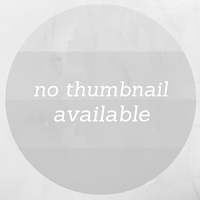I am joining Pawsitively Teaching and Inspired Owl's Corner for "Pick 3" to share the ways I build community in Middle School.
First, I work to get to know my students - who they are, what they like and what they dislike.
 |
| Pin Source |
. These conversation starters would be great for journal entries, bell-ringers, or circle meetings.
(Yes, I like to do some circle meetings in Middle School! See more in the next pin.)
 |
| Pin source - click the link to see the video. |
This pin is a link to a video that explains Responsive Classroom (RC). I like to use RC in my middle school classroom even though its roots are in Elementary.
RC uses things like morning meeting, interactive modeling, logical consequences and much more to create a positive, successful learning environment.
In middle school, I have experimented with morning meeting by having my own version of a circle meeting at the start of my class. How does this work, you ask?
Well, we have a routine for entering the room that includes students picking up their materials on their way in and then writing in their planners. Then, after writing in the planners, the students are to report to the circle (by the end of the song I play).
In that circle, we greet one another by name, and then I ask a question to which each person responds (or passes) on. We may review something from yesterday and/or create an anchor chart here as part of a mini-lesson. Then I try to incorporate some physical movement activity to work with the concept we just talked about.
Of course, we have agreements in place to determine proper procedure and behavior in this situation and in the beginning of the year, we mainly focus on getting to know you questions like the ones at the top of this post.
What I love about RC is that it builds community very quickly and allows students to be engaged and heard each and every day.
Of course, we have agreements in place to determine proper procedure and behavior in this situation and in the beginning of the year, we mainly focus on getting to know you questions like the ones at the top of this post.
What I love about RC is that it builds community very quickly and allows students to be engaged and heard each and every day.
 |
| Pin source |
Lastly, I also like to use Love and Logic which, among other things, helps teachers put the responsibility for behavior where it belongs: on the student.
It helps teachers use enforceable statements, figure out how to respond to arguing students, and guide students to solve their own problems (to name a few).
It helps teachers use enforceable statements, figure out how to respond to arguing students, and guide students to solve their own problems (to name a few).
Putting all of this together has created a class community that can live and work together well in my room each and every day. That doesn't mean everyday is sunshine and flowers, but it does mean we are set up for success and are prepared to make corrections as necessary to get us back on track.
I hope these pins give you some new ideas!
Creative teachers from across the country link up to share some great Pinterest finds for the month of September.
The collection has closed. Let other people know about it through twitter.





